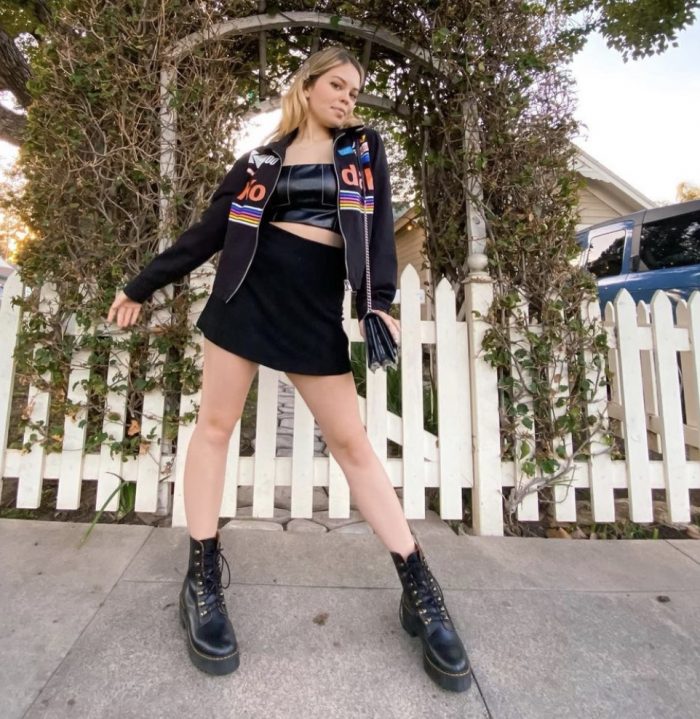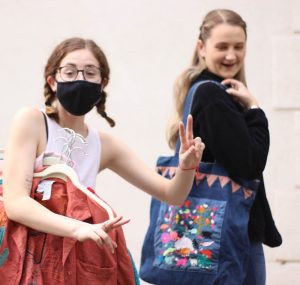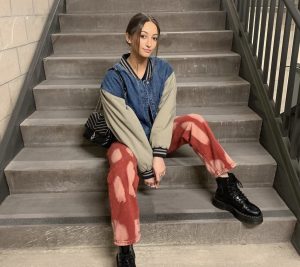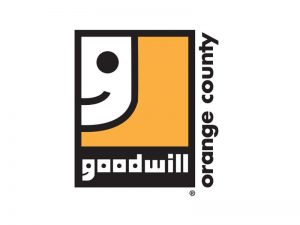
Poppin’ some tags, twenty dollars in your pocket, looking for a come-up — all in all, thrift shopping is practically a treasure hunt. And as Macklemore, thrift visionary of the 21st century once stated, it’s “f***ing awesome.”
For example, Hunter Freedman, a 21-year-old film studies major at Chapman, bought a prom dress for under $50.
“It fit me perfectly and was exactly what I wanted,” Freedman said. “I didn’t want a classic prom dress, so finding this piece as well as feeling better about my purchase not contributing to fast fashion made prom a little bit more special!”
Talk about a come up. If you didn’t know, that’s thrift-speak for a really great find.

In recent years, thrift shopping has become increasingly popular. Not only does it recycle clothing that would otherwise end up in landfills, but it allows people, like Freedman, to explore their personal style by buying unique items.
“I love adding pieces to my closet that no one else really has, or getting pieces to put my own creative touch on,” Freedman said.
These pieces usually come at more affordable prices than typical retail stores, or so it once seemed.
Freedman, an Arizona native, admitted she has noticed that the thrift store prices in Orange County are higher than they are back in her home state.
This is because Freedman isn’t the only one sifting through thrift stores to cop a find. (Another key term. Copping a find means capitalizing on a deal. And lots of young people are doing it these days.)
Ava Ganz, a 20-year-old strategic and corporate communication major, got her first thrift fix with a vintage pair of Levi’s jeans.

“I got pretty addicted to that satisfying feeling of finally thrifting something you have been searching for,” Ganz said.
Along with her dream jeans, Ganz has also scored on treasures like a classic brown Fendi logo print bag, which can retail for over a thousand dollars.
Ganz has also noticed the rising thrift store prices.
“Thrifting is definitely not as cheap as many people may think,” Ganz said. “Tops used to be $2, maybe $3. Now they usually start at $6, at least here in California.”

Indeed, reports from the thrift superstore Goodwill reveal the changing landscape. In a 2010 valuation guide, Goodwill priced a woman’s blouse at $4. However, in the 2020 guide, the value of the same article of clothing could be as high as $12.
Affordability is a trademark for thrift stores, so price increases understandably raise alarm. Nonprofit organizations, like Goodwill, are donation-based operations. This means they are essentially marking up prices on items they received for free.
“Many people are angry about the rise in popularity of thrifting because they believe it is becoming gentrified,” Freedman said. “But I think a lot of people do it now for so many reasons such as saving money, buying more sustainably, contributing to good causes via charitable thrift stores.”
And many thrift stores do contribute to good causes.
Last year, Goodwill reported that 1 in 125 people in need were placed in jobs in the U.S. with help from their local store. The sales at Goodwill thrift superstores are largely what fund these programs, according to a statement Goodwill released in response to inquiries about its pricing.
“While our stores serve to fund our programs and provide jobs for those otherwise facing barriers to the economic mainstream (including visible and non-visible disabilities),” the statement said. “We also aim to provide an interesting array of like-new clothes at affordable prices at our Goodwill stores.”

The self-proclaimed “largest online thrift store” thredUp estimates, since its beginnings, it has recirculated nearly 4 million pieces of clothing, saving 5.5 million pounds of waste. This is huge, considering that the Environmental Protection Agency estimates nearly 11 tons of clothing ended up in landfills in 2018 alone.
Much of this wasted clothing comes from “fast fashion” companies, whose use of sweatshop labor allows the sale of clothes at ridiculously low prices. These fabrics are often low quality and only last for a season.

Amea Wadsworth, a 19-year-old English major, decided over a year ago to only purchase secondhand clothing in order to combat the waste the fashion industry produces.
Waste that not even thrift stores are completely exempt from.
“Thrift stores throw away about 80% of their clothing,” Wadsworth said. “Them getting more business with younger people and more financially stable people purchasing does help reduce this landfill clothing waste.”
The younger generation’s interest in thrifting doesn’t seem to be going away anytime soon, either.
Last year, thredUp released a resale report detailing the current trends of the resale industry. The report found that nearly 40% of people under age 24 purchased second-hand goods in 2019.
The report also anticipates that the resale market will increase five times over the next five years.
For people who are concerned about the rising thrift store prices affecting low-income communities, Wadsworth suggested exploring other secondhand options, including resell apps like Depop and Poshmark.
Freedman, the aforementioned fifty-dollar-prom-dress-extraordinaire, is also the founder and curator of Just Because Clothing. The resell business channels Freedman’s love for thrifting by giving new homes to unique pieces of clothing.
And Ganz, owner of the drool-worthy Fendi bag, has also made a name for herself with her own sustainable styling venture, BundledByAva. The business sources completely secondhand and sustainable stock to curate customers’ dream outfits.
“I do not really think the concept of thrift store gentrification is as prominent as people believe it to be,” Wadsworth said. “I think the rising prices has more to do with greedy corporations than it does with individuals trying to reduce their own unethical consumption.”
Poppin’ tags can take several forms, whether that is paying the higher thrift store prices in order to save clothing from landfills and fund programs for people in need, choosing to shop secondhand ventures like Freedman’s or Ganz’s to support more sustainable business practices, or simply reducing how much one actually shops.
According to Wadsworth, it all helps to “create demand for ethical industries over unethical ones.”

Megan J. Miller is a senior studying journalism and documentary film. When she isn’t writing, you can find her working on her ’95 Bronco, exploring new hiking trails, or scouring the thrift stores for the best vintage finds.
Megan J. Miller is a senior studying journalism and documentary film. When she isn't writing, you can find her working on her '95 Bronco, exploring new hiking trails, or scouring the thrift stores for the best vintage finds.
